CoRE-ATAC: A deep learning model for the functional classification of regulatory elements from single cell and bulk ATAC-seq data
- PMID: 34898596
- PMCID: PMC8699717
- DOI: 10.1371/journal.pcbi.1009670
CoRE-ATAC: A deep learning model for the functional classification of regulatory elements from single cell and bulk ATAC-seq data
Abstract
Cis-Regulatory elements (cis-REs) include promoters, enhancers, and insulators that regulate gene expression programs via binding of transcription factors. ATAC-seq technology effectively identifies active cis-REs in a given cell type (including from single cells) by mapping accessible chromatin at base-pair resolution. However, these maps are not immediately useful for inferring specific functions of cis-REs. For this purpose, we developed a deep learning framework (CoRE-ATAC) with novel data encoders that integrate DNA sequence (reference or personal genotypes) with ATAC-seq cut sites and read pileups. CoRE-ATAC was trained on 4 cell types (n = 6 samples/replicates) and accurately predicted known cis-RE functions from 7 cell types (n = 40 samples) that were not used in model training (mean average precision = 0.80, mean F1 score = 0.70). CoRE-ATAC enhancer predictions from 19 human islet samples coincided with genetically modulated gain/loss of enhancer activity, which was confirmed by massively parallel reporter assays (MPRAs). Finally, CoRE-ATAC effectively inferred cis-RE function from aggregate single nucleus ATAC-seq (snATAC) data from human blood-derived immune cells that overlapped with known functional annotations in sorted immune cells, which established the efficacy of these models to study cis-RE functions of rare cells without the need for cell sorting. ATAC-seq maps from primary human cells reveal individual- and cell-specific variation in cis-RE activity. CoRE-ATAC increases the functional resolution of these maps, a critical step for studying regulatory disruptions behind diseases.
Conflict of interest statement
The authors have declared that no competing interests exist.
Figures
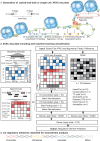
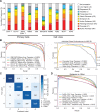
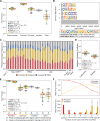
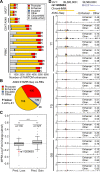
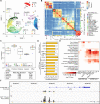
Similar articles
-
Definition of regulatory elements and transcription factors controlling porcine immune cell gene expression at single cell resolution using single nucleus ATAC-seq.Genomics. 2024 Nov;116(6):110944. doi: 10.1016/j.ygeno.2024.110944. Epub 2024 Sep 24. Genomics. 2024. PMID: 39326643
-
Single-cell ATAC-Seq in human pancreatic islets and deep learning upscaling of rare cells reveals cell-specific type 2 diabetes regulatory signatures.Mol Metab. 2020 Feb;32:109-121. doi: 10.1016/j.molmet.2019.12.006. Epub 2019 Dec 20. Mol Metab. 2020. PMID: 32029221 Free PMC article.
-
Efficient chromatin accessibility mapping in situ by nucleosome-tethered tagmentation.Elife. 2020 Nov 16;9:e63274. doi: 10.7554/eLife.63274. Elife. 2020. PMID: 33191916 Free PMC article.
-
Interrogating the Accessible Chromatin Landscape of Eukaryote Genomes Using ATAC-seq.Methods Mol Biol. 2021;2243:183-226. doi: 10.1007/978-1-0716-1103-6_10. Methods Mol Biol. 2021. PMID: 33606259 Review.
-
From reads to insight: a hitchhiker's guide to ATAC-seq data analysis.Genome Biol. 2020 Feb 3;21(1):22. doi: 10.1186/s13059-020-1929-3. Genome Biol. 2020. PMID: 32014034 Free PMC article. Review.
Cited by
-
Deciphering transcription factors and their corresponding regulatory elements during inhibitory interneuron differentiation using deep neural networks.Front Cell Dev Biol. 2023 Feb 20;11:1034604. doi: 10.3389/fcell.2023.1034604. eCollection 2023. Front Cell Dev Biol. 2023. PMID: 36891511 Free PMC article.
-
ChromatinHD connects single-cell DNA accessibility and conformation to gene expression through scale-adaptive machine learning.Nat Commun. 2025 Jan 2;16(1):317. doi: 10.1038/s41467-024-55447-9. Nat Commun. 2025. PMID: 39747019 Free PMC article.
-
Inferring the Selective History of CNVs Using a Maximum Likelihood Model.Genome Biol Evol. 2025 Mar 6;17(3):evaf050. doi: 10.1093/gbe/evaf050. Genome Biol Evol. 2025. PMID: 40100752 Free PMC article.
-
maxATAC: Genome-scale transcription-factor binding prediction from ATAC-seq with deep neural networks.PLoS Comput Biol. 2023 Jan 31;19(1):e1010863. doi: 10.1371/journal.pcbi.1010863. eCollection 2023 Jan. PLoS Comput Biol. 2023. PMID: 36719906 Free PMC article.
-
Chromatin Structure and Dynamics: Focus on Neuronal Differentiation and Pathological Implication.Genes (Basel). 2022 Apr 2;13(4):639. doi: 10.3390/genes13040639. Genes (Basel). 2022. PMID: 35456445 Free PMC article. Review.
References
-
- Hindorff LA, Sethupathy P, Junkins HA, Ramos EM, Mehta JP, Collins FS, et al.. Potential etiologic and functional implications of genome-wide association loci for human diseases and traits. Proceedings of the National Academy of Sciences. 2009. Jun 9;106(23):9362–7. doi: 10.1073/pnas.0903103106 - DOI - PMC - PubMed
-
- Parker SCJ, Stitzel ML, Taylor DL, Orozco JM, Erdos MR, Akiyama JA, et al.. Chromatin stretch enhancer states drive cell-specific gene regulation and harbor human disease risk variants. Proceedings of the National Academy of Sciences. 2013. Oct 29;110(44):17921–6. doi: 10.1073/pnas.1317023110 - DOI - PMC - PubMed
Publication types
MeSH terms
Substances
Grants and funding
LinkOut - more resources
Full Text Sources

